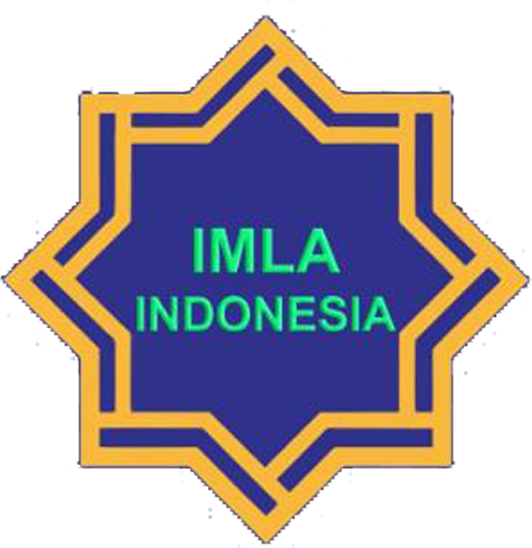Language and Gender in Children’s Films ‘Umar wa Ikhwatuhu and ‘Ā’isyah wa Shadīqātuhā: A Sociolinguistic Study
Abstract
Keywords
Full Text:
PDFReferences
Adriani, A. Y., Muttalib, A., & Irmayani, N. (2020). Analisis Film Perempuan Berkalung Sorban Karya Hanung Bramantyo melalui Model Sara Mills. Pepatudzu : Media Pendidikan dan Sosial Kemasyarakatan, 16(1), 61. https://doi.org/10.35329/fkip.v16i1.662
Agata, A. O., & Saifullah, A. R. (2022). Ragam Bahasa Pada Caption Instagram: Analisis Gender (Variety of Languages on Instagram Captions: Gender Analysis). Indonesian Language Education and Literature, 7(2), 388. https://doi.org/10.24235/ileal.v7i2.9592
Al-Harahsheh, A. M. A. (2014). Language and Gender Differences in Jordanian Spoken Arabic: A Sociolinguistics Perspective. Theory and Practice in Language Studies, 4(5), 872–882. https://doi.org/10.4304/tpls.4.5.872-882
Ali, H. H. E.-S., & Dana, A. M. A. Y. (2020). The Bridging Language between Diglossia of Classical and Colloquial Arabic. Al-Arabi: Journal of Teaching Arabic as a Foreign Language. http://dx.doi.org/10.17977/um056v4i2p130-162
Al-Jarimy, A., & Amin, M. (2005). Ilmu Al-Nahwu. Darussalam Press.
Banks, J. A. (1997). Multicultural Education. Allyn & Bacon.
Baqi, M. F. A. (2021). Al-Lu’lu’ Wal Marjan. Ummul Qura’.
Brown, H. D. (2007). Principles of Language Learning and Teaching. Addison Wesly Longman.
Butler, J. (2019). Gender in Translation: Beyond Monolingualism. PhiloSOPHIA, 9(1), 1–25. https://doi.org/10.1353/phi.2019.0011
Chaer, A., & Agustina, L. (2014). Sosiolinguistik. Rineka Cipta.
Deriu, F., & Fioredistella Iezzi, D. (2020). Text Analytics in Gender Studies. Introduction. International Review of Sociology, 30(1), 1–5. https://doi.org/10.1080/03906701.2020.1724365
Djajasudarma, T. F. (2010). Metode Linguistik :Ancangan Metode Penelitian Dan Kajian. PT. Refika Aditama.
Eckert, P., & Ginet, S. M. (2013). Language and Gender. Cambridge University Press.
El-Dahdah, A. (1944). A Dictionary of Universal Arabic Grammar. Librairie du Liban Publisher.
Febriani, I. (2021). REPRESENTASI BAHASA PEREMPUAN DALAM NOVEL SULUK MU’TAZILAH KARYA HASNAN SINGODIMAYAN. 3.
Gan, Z. (2011). Second Language Task Difficulty: Reflections on the Current Psycholinguistic Models. Theory and Practice in Language Studies, 1(8), 921–927. https://doi.org/10.4304/tpls.1.8.921-927
Hasanah, H. (2021). Bahasa dan Gender: Karakteristik Kebahasaan Perempuan Jawa dalam Film ‘Tilik.’ 2(1).
Holmes, J. (2008). Introduction to Sociolinguistics. Pearson Longman.
Intan, T. (2020). STEREOTIP GENDER DALAM NOVEL MALIK & ELSA KARYA BOY CANDRA.
Kalsum, U. (2021). Studi Gender Dalam Bahasa Arab. 15(2).
Kaplan, A. (2016). Women Talk More Than Men. Cambridge University Press.
Lakoff, R. (1973). Language and woman’s place. Language in Society, 2(1), 45–79. https://doi.org/10.1017/S0047404500000051
Lakoff, R. (2023). Language and Woman’s Place. LANGUAGE IN SOCIETY.
Mamdud, R. (2019). Dakwah Islam di Media Massa. Al-I’lam: Jurnal Komunikasi dan Penyiaran Islam, 3(1), 47. https://doi.org/10.31764/jail.v3i1.1366
Nurgiyantoro, B. (2017). Stilistika. Gadjah Mada University Press.
Obidovna, D. Z. (2021). GENDER ISSUES IN FOREIGN THEORETICAL LINGUISTICS: CONCERNING THE HISTORY OF THE ISSUE. 7(2581).
Perdana, D. D. (2014). Stereotip Gender dalam Film Anna Karenina. 3(2).
Piergentili, A., Fucci, D., Savoldi, B., Bentivogli, L., & Negri, M. (2023). Gender Neutralization for an Inclusive Machine Translation: From Theoretical Foundations to Open Challenges (arXiv:2301.10075). arXiv. http://arxiv.org/abs/2301.10075
Prayitno, J. H. (2017). Studi Sosiopragmatik. Muhammadiyah University Press.
Rahma Salbiah & Sumardi. (2021). BAHASA DAN GENDER DALAM FILM: ATHIRAH (Sebuah Kajian Sosiolinguistik). An-Nahdah Al-’Arabiyah, 1(2), 56–69. https://doi.org/10.22373/nahdah.v1i2.1231
Rupidara, I., & Apriyani, T. (2023). KARAKTERISTIK KEBAHASAAN TOKOH LAKI-LAKI DAN PEREMPUAN PADA FILM “TEKA-TEKI TIKA” KARYA ERNEST PRAKASA. MIMESIS, 4(1), 50–61. https://doi.org/10.12928/mms.v4i1.7159
Setyawan, M. Y. (2021). PERBEDAAN POLA BAHASA PRIA DAN WANITA DALAM FILM WADJDA; ANALISIS TEORI PERBEDAAN. 18(1).
Sudaryanto. (2015). Metode Dan Aneka Teknik Analisis Bahasa.
Sanata Dharma University Press.
Susanti, D. L., & Wulandari, N. (2018). Demistifikasi Gender Biner dalam Novel Gone Girl Karya Gillian Flynn: Bahasa, Kekuasaan, dan Hegemoni Maskulinitas. Seminar Nasional Struktural 2018, 124–137. https://doi.org/10.33810/274168
Sutorini, M. P., Alif, M., & Sarwani, S. (2019). Semiotika Gender dalam Film Brave. ProTVF, 3(1), 101. https://doi.org/10.24198/ptvf.v3i1.21246
Wijayanti, S. H. (2012). Kecenderungan siswa SMA di Bekasi dalam Memilih Topik Esai ditinjau dari Perspektif Gender. 24(2).
Zaduqisti, E. (2013). STEREOTIPE PERAN GENDER BAGI PENDIDIKAN ANAK. Muwazah, 1(1). https://doi.org/10.28918/muwazah.v1i1.281
DOI: http://dx.doi.org/10.17977/um056v8i1p20-32
Refbacks
- There are currently no refbacks.
Copyright (c) 2024 Izzah Avanti, Wiwik Retno Handayani

This work is licensed under a Creative Commons Attribution-NonCommercial 4.0 International License.
AL-ARABI is indexed by:
Editorial Office:
Al-Arabi: Journal of Teaching Arabic as a Foreign Language
Arabic Department, Faculty of Letters, Universitas Negeri Malang (UM)
Jalan Semarang 5, Malang 65145, Indonesia.
Telephone: (0341) 551312 Ext. 239. Fax (0341) 567475.
E-mail: alarabi@um.ac.id

Al-Arabi: Journal of Teaching Arabic as a Foreign Language is licensed under a Creative Commons Attribution 4.0 International License.
Based on a work at http://journal2.um.ac.id/index.php/alarabi/










